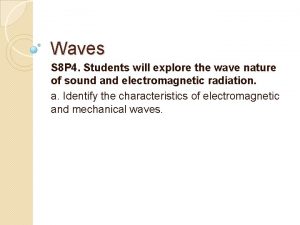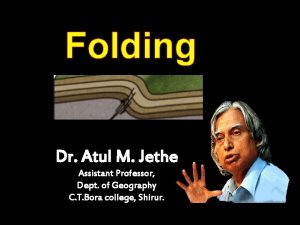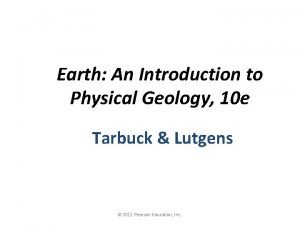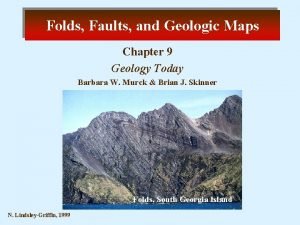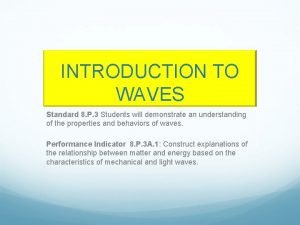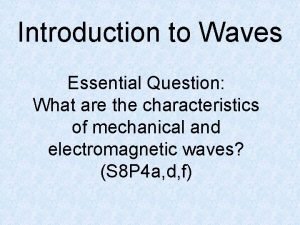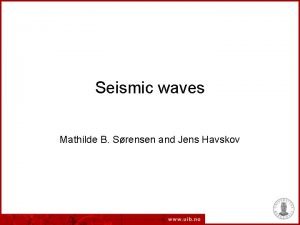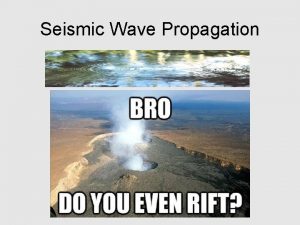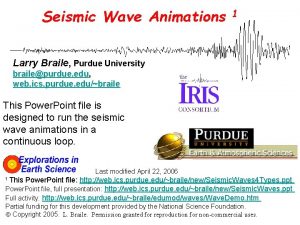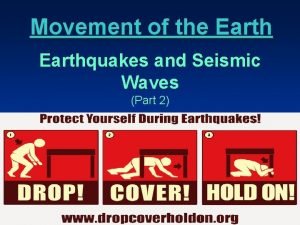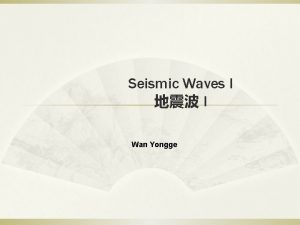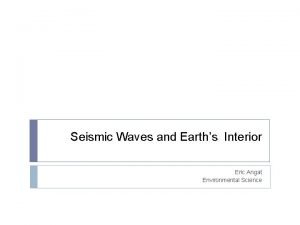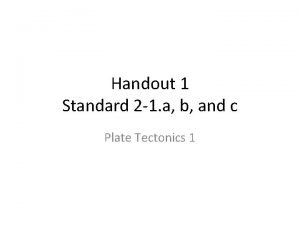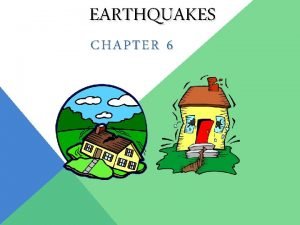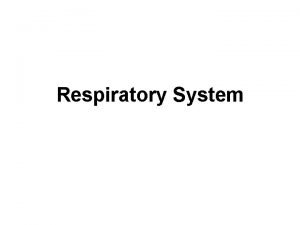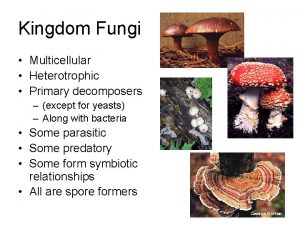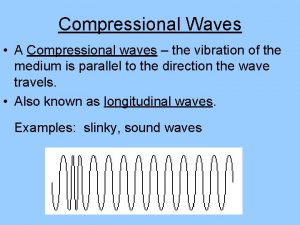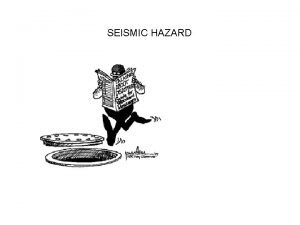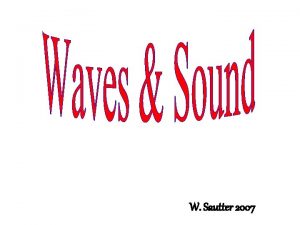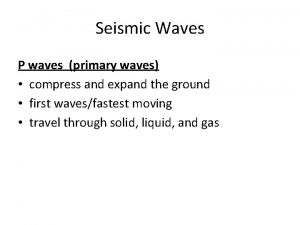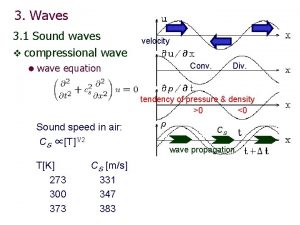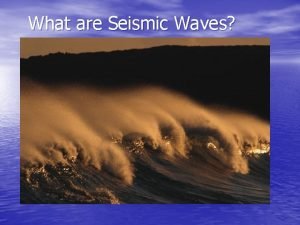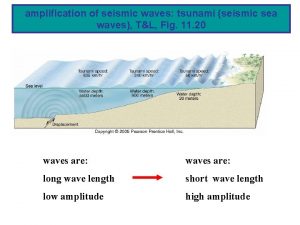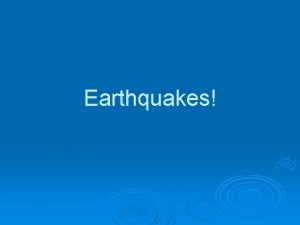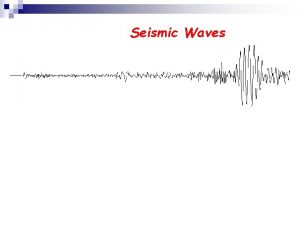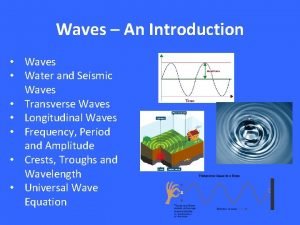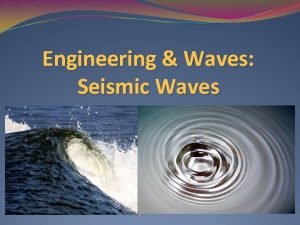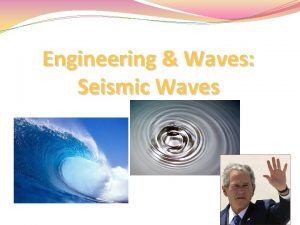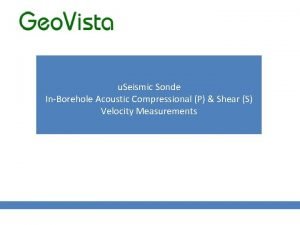Seismic Waves Pwaves also called primary or compressional





































- Slides: 37

Seismic Waves § P-waves - also called primary or compressional waves (push/pull)

P-Waves

P-Wave Damage

Seismic Waves § S-waves- also called secondary or shear waves

S-Waves

S-Wave Damage

S-Waves

Seismic Waves

Seismic Waves

Locating Earthquake Epicenter

Locating Earthquake Epicenter

Locating Earthquake Epicenter

Locating Earthquake Epicenter


Locating Earthquake Epicenter

Atmosphere

Atmosphere § The mixture of gases that surrounds Earth § Nitrogen, oxygen, carbon dioxide, and other gases are all parts of this mixture § These gases are constantly added and removed

Composition of the Atmosphere § 78% Nitrogen § 21% Oxygen § Other gases including argon, carbon dioxide, methane, and water vapor make up the rest of the atmosphere

Not just gases § The atmosphere also contains atmospheric dust (many types of tiny, solid particles) in addition to gases. § Atmospheric dust can include: • • • Soil Salt Ash Pollen Bacteria and viruses Aerosols – tiny liquid droplets

Layers of the Atmosphere § Four layers: • • Troposphere Stratosphere Mesosphere Thermosphere

Troposphere § The atmospheric layer nearest the surface of the Earth § It extends to 18 km above Earth’s surface

Stratosphere § The layer above the troposphere § Where the ozone layer is located




Mesosphere § The layer above the stratosphere § Extends to an altitude of about 80 km

Thermosphere § Layer of the atmosphere furthest from Earth’s surface

Temperature in the Atmosphere

Energy and Heating § Three mechanisms transfer energy from the sun: • Radiation • Convection • Conduction

Energy and Heating § Radiation - the transfer of energy across space and in the atmosphere § Convection - the transfer of heat by air currents. Hot air rises and cold air sinks. § Conduction - the flow of heat from a warmer object to a colder object when the objects are placed in direct physical contact

Heating Earth § Our planet only receives about two-billionths of the sun’s energy § About half the energy that reaches the atmosphere will pass though to Earth’s surface § The rest is absorbed or reflected in the atmosphere by clouds, gases, and dust, or by the Earth’s surface § Oceans and land radiate energy back into the atmosphere – so the Earth doesn’t overheat!



Greenhouse Gases Warm the Lower Atmosphere § Greenhouse gases • • H 2 O CO 2 CH 4 N 2 O § Greenhouse effect § Human-enhanced global warming

The Greenhouse Effect

The Greenhouse Effect § The greenhouse effect : § Without the greenhouse effect, the Earth would be too cold for life to exist.

Flow of Energy to and from the Earth
 Seismic waves are mechanical waves
Seismic waves are mechanical waves Whats a compressional wave
Whats a compressional wave Isoclinal fold
Isoclinal fold Compressional mountains
Compressional mountains Osn
Osn Parts of transverse wave
Parts of transverse wave Compressional wave parts
Compressional wave parts Seismic waves
Seismic waves Seismic waves
Seismic waves Seismic
Seismic P wave animation
P wave animation What are the three types of seismic waves
What are the three types of seismic waves Seismic waves
Seismic waves L wave
L wave Seismic waves
Seismic waves Seismic waves
Seismic waves Seismic waves
Seismic waves Four types of seismic waves
Four types of seismic waves What are the factors of earthquake
What are the factors of earthquake Difference between electromagnetic and mechanical waves
Difference between electromagnetic and mechanical waves Longitudinal wave vs transverse wave
Longitudinal wave vs transverse wave Characteristics of mechanical waves
Characteristics of mechanical waves Differences between mechanical and electromagnetic waves
Differences between mechanical and electromagnetic waves What type of waves are sound waves? *
What type of waves are sound waves? * Whats a reflected sound wave
Whats a reflected sound wave What is a semiconductor used for
What is a semiconductor used for Mechanical waves and electromagnetic waves similarities
Mechanical waves and electromagnetic waves similarities Mechanical vs electromagnetic waves
Mechanical vs electromagnetic waves Mechanical and electromagnetic waves similarities
Mechanical and electromagnetic waves similarities Compare and contrast p waves and s waves using venn diagram
Compare and contrast p waves and s waves using venn diagram Mechanical waves vs electromagnetic waves venn diagram
Mechanical waves vs electromagnetic waves venn diagram Aimtoknow
Aimtoknow Blind search in artificial intelligence
Blind search in artificial intelligence How is citric acid cycle regulated
How is citric acid cycle regulated Specification based testing
Specification based testing Pharynx
Pharynx A workbook is also called a
A workbook is also called a Multicellular heterotrophic
Multicellular heterotrophic

